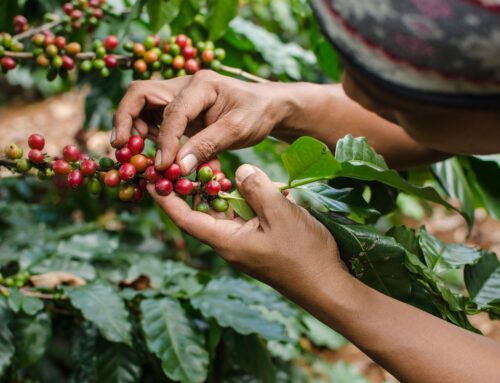La Nación newspaper, Costa Rica, 29th August 2017
Translated from Spanish by PAN UK
- Processing plant will serve as a better means of dealing with foliage waste left over after harvesting pineapple fruit
- Machinery will also generate biogas fuel to generate electricity
Creation of environment-friendly biofertiliser
The first processing unit in Costa Rica, able to convert pineapple crop waste into an environment-friendly biofertiliser, will start operations in Upala, in the northern zone, in late October. The advanced technology plant will operate at Valle del Tarso Estate, dedicated to organic pineapple production. This forms part of a pilot project to find solutions to the scale of crop waste residue generated in the country by the pineapple production sector. The estate’s management has taken on the installation of the processing unit, with the aim to transform the 220 tons of foliage waste per day generated per hectare of pineapple.

Machinery in operation at Valle del Tarso estate, selected by the pilot project to be dedicated to entirely organic pineapple production. (ICE PARA LN)
Although exact costs are not available, a processing plant of this kind, at large scale, costs between US$1.5-2.0 million. The project has been developed by the Costa Rican Institute for Electricity (ICE) in coordination with the Ministries of Agriculture, Environment & Energy and Planning & Economic Development, financed by the Spanish Agency for International Development Cooperation (AECID). Costa Rica has processing plants for waste from the pork and beef industry and for waste water from production of vegetable oil. However, there has not been a solution for managing this kind of crop waste.
Responsible management
Until now, the huge problem for pineapple producers has been that the waste material (root, stalks and pineapple leaves) is left in the field, i.e. not removed after harvest. Producers opt for applying agrochemicals [mainly paraquat herbicide] to ‘burn down’ the waste or to chop it up and leave it on the soil. Foliage waste on the ground attracts the stable fly Stomoxys calcitrans, which is harmful to cattle and a vector of disease. Evelio Chaves, owner of Valle del Tarso Estate, commented that managing pineapple waste material has become a headache for producers, due to lack of research, development and application of modern technologies for its treatment.
Carolina Hernández, coordinator of ICE’s biogas programme, said that with the plant there will now be no need to burn off or chop the waste and leave it in the field. “Instead, the aim is to collect the waste, bring it to a collection centre and treat it in a biodigester unit to convert it into biofertiliser”, explained the expert. According to her, this will moderate the use of agrochemicals and give a helping hand to the environment. “The important thing is we are generating a nutrient cycle for production, by which use of synthetic fertilisers would be reduced and soil structure improved”. The expert said that the elimination process for this waste will drop from 12 to 6 weeks, which will impact positively on the field management tasks for pineapple producers.
Waste with energy potential
What is farm waste useful for? Organic waste, such as pineapple foliage, contains biomass, material of plant or animal origin with energy production potential. This biomass would be used by the processing plant not only to produce biofertilisers but also biogas, an alternative fuel which could be used to generate electricity. These biofuels represent a strong alternative to hydroelectric energy (from water) used in the country. The processing unit initiative sits within the NAMA programme for Nationally Appropriate Mitigation Actions, with emphasis on residual energy from biomass. With this initiative, the aim is to transform use of organic waste as a source of renewable energy.
Progress in the construction of the innovative plant was announced during the latest results meeting on Support to the National Programme on Climate Change in Costa Rica; improving mitigation and adaptation capacity, held on 28th August 2017 in San José. ICE’s biogas programme has been working for over 10 years with the private sector and large scale farmers on generating thermal energy and electricity. To date, 2.6 megawats of biogas generation are installed nationally, a figure considered moderate if the national potential is taken into account.
Read about our work to phase out the use of pesticides in Costa Rica here.





